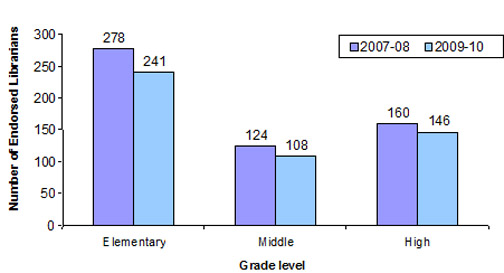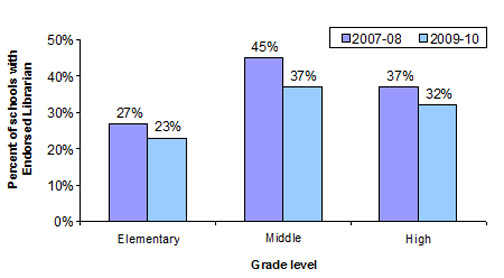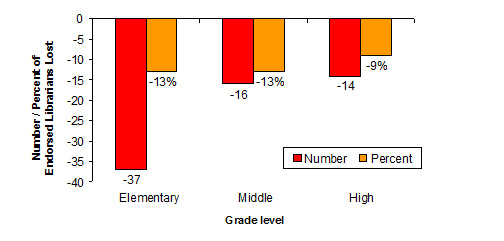As Colorado begins implementing new content standards that emphasize the acquisition of 21st century skills and the ability to understand information in new ways, “digital natives,” a demographic group born and raised in the information age and presumed to be tech savvy, demonstrate a surprising lack of discernment when evaluating information resources, according to a recent study of first-year college students at the University of Illinois in Chicago.[note]Perez, S. (2010, July 29). So-called digital natives not media savvy, new study shows. ReadWriteWeb. http://www.readwriteweb.com/archives/so-called_digital_natives_not_media_savvy_new_study_shows.php[/note] Unfortunately, this comes at a time when school librarians are finding their positions being eliminated, despite being uniquely qualified as information specialists to help students develop information literacy as part of meeting the post-secondary and workforce readiness expectations of students in the state.
Data from the Colorado Department of Education reveals that the number of endorsed librarian positions (in full-time equivalents) in Colorado public schools is trending downward, with substantial losses over the last 2 school years. In 2007-08, the majority of endorsed librarians (278) were employed in elementary schools, and the following year that number dropped to 241. Similar declines were experienced at middle and high school levels (see Chart 1).
Chart 1
Number of Endorsed Librarians in Colorado Public Schools by Grade Level
2007-08 and 2009-10
Despite the fact that a greater number of librarians were employed at elementary rather than middle and high school levels in 2007-08, elementary schools were still the least likely to have an endorsed librarian on staff. This difference is a result of the greater number of elementary schools in Colorado, which proportionally have fewer librarians compared to the smaller number of middle and high schools in the state.
In 2007-08, only about a quarter (27%) of elementary schools had a librarian, compared to almost half (45%) of middle schools and more than a third (37%) of high schools. The percentage of elementary schools with a librarian fell from 27 percent in 2007-08 to 23 percent in 2009-10. Even more dramatic downward trends were experienced at middle and high school levels (see Chart 2).
Chart 2
Percent of Colorado Public Schools with Endorsed Librarian by Grade Level
2007-08 and 2009-10
Between 2007-08 and 2009-10, Colorado elementary schools experienced a net loss of 37 endorsed librarian positions. Similar patterns for middle and high schools account for the net loss of another 30 positions at middle and high schools. The reduced number of librarian positions at elementary and middle schools constituted a loss of 13 percent. At high schools, the proportional loss of librarian positions was slightly less severe at 9 percent (see Chart 3). Of course, the data does not reflect any reduced funding for K-12 education for the 2010-11 school year, which will likely result in additional library staff reductions.
Chart 3
Loss of Endorsed Librarians in Colorado Public Schools by Grade Level
2007-08 and 2009-10
Over the past 2 school years (2007-08 through 2009-10), the net loss of 67 librarian positions out of 562 constitutes a loss of 12 percent of all endorsed librarian positions in Colorado public schools. If endorsed librarian positions continue to be lost at the rate of 67 a year, they will be extinct in Colorado public schools by 2025. Hypothetically speaking, that means that by the time children born today reach high school, they would not have the assistance of trained librarians to help them navigate the information environment—and just at a time when such skills are becoming more and more important to society and also as part of the very standards in which students are expected to be proficient.


